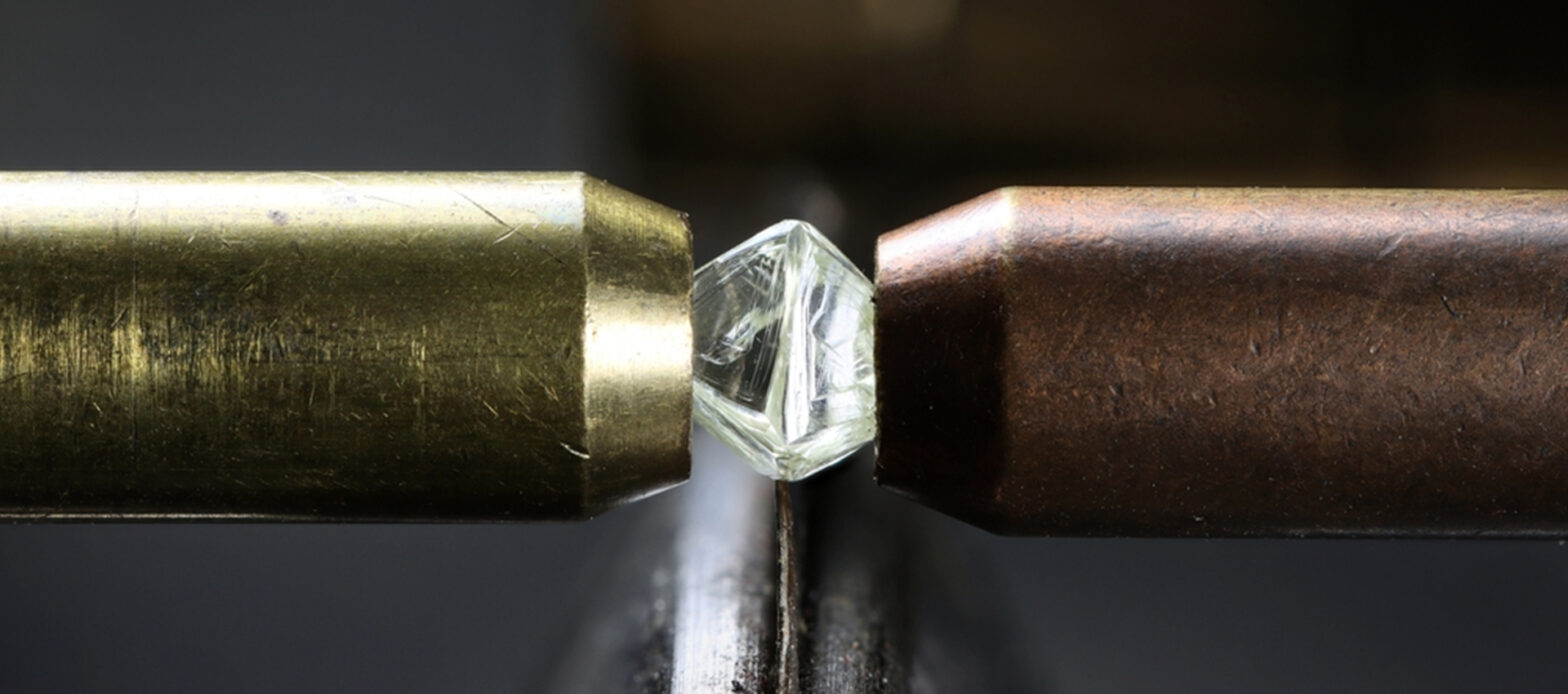
CVD diamonds or “Chemical Vapour Disposition” are synthetic or lab-grown diamonds having similar qualities as natural diamonds. To summarise, they are manufactured by breaking down natural gas like methane into carbon atoms that amass around a diamond starter to form a new diamond. The processing occurs in a vacuum chamber where the crystals are subjected to heat and pressure to eliminate coloration.
Though manufactured in a lab, CVD diamonds are chemically identical to mined diamonds, comprising of carbon atoms and natural gas. Synthetic diamonds find use in both jewelleries as well as for industrial purposes.
Traditionally, synthetic or lab-grown diamonds were made using High-Pressure High Temperature (HPHT) technology. Here, synthetic diamonds are made from carbon material in machines that mimic the high-pressure, high-temperature conditions that occur during natural diamond formation on Earth.
However, CVD is the newer method of diamond production, wherein a vacuum chamber is filled with carbon-containing gas that crystallizes on a synthetic diamond seed utilizing lower temperatures and pressures than HPHT. Though CVD requires lower upfront cost than HPHT but may require subsequent treatment to improve the color of the diamonds grown.
In this process, the seed diamond is placed in a diamond growth chamber. The vacuum chamber is filled with carbon and hydrogen containing gas like methane which is heated to about 900-1200°C and a microwave beam breaks down the gas molecules causing the carbon molecules to precipitate out of the plasma could and deposit on the colder seed crystal. This leads to the growth of several crystals at the same time over a period of weeks depending on the size of the chamber and the number of seed plates. The CVD method continues to improve and allow manufacturers to offer larger sizes with improved colour and clarity.
In HF CVD, the precursor gases, typically a mixture of CH4 and H2, are activated by a carburized tungsten or tantalum filament heated to approximately 2500 K by an electric current.
The primary function of the hot filament is to generate methyl radicals, which are precursors to diamond phase growth, and atomic hydrogen. Atomic hydrogen was discovered to engrave graphite co-deposits much faster than diamond species, promoting the growth of large diamond crystals. However, due to the filament material's upper temperature limit, the concentration of atomic hydrogen in HF CVD syntheses is significantly lower than in plasma-activated CVD processes.
Due to diamonds’ extraordinary properties, such as extreme hardness, chemical inertness, optical transparency, high thermal conductivity in combination with electrical insulation, they find applications in several fields.
CVD diamonds have found applications in numerous fields including:
OxyMed gas system team members are experts and have specialization in each industry to guide and serve your projects. Feel free to speak to a specialist for the Lab gas systems in Dubai-UAE, Saudi Arabia, Middle East, Africa and India.